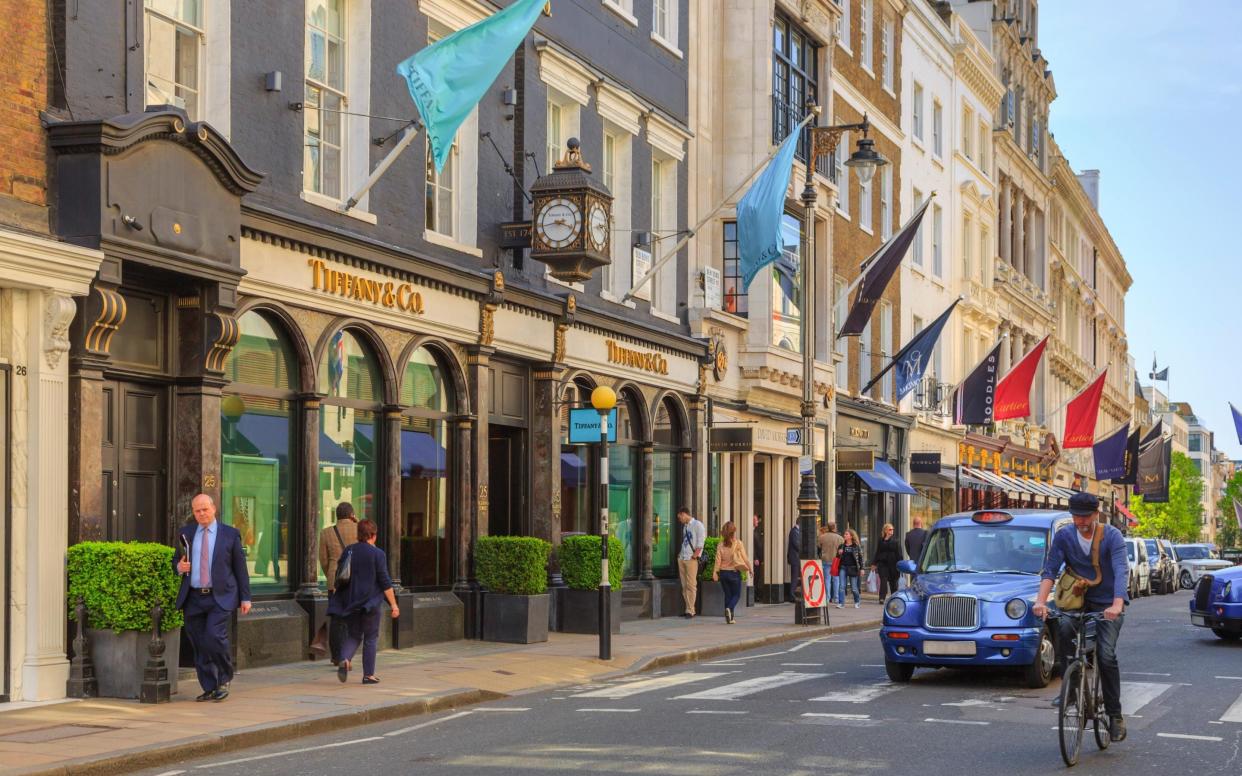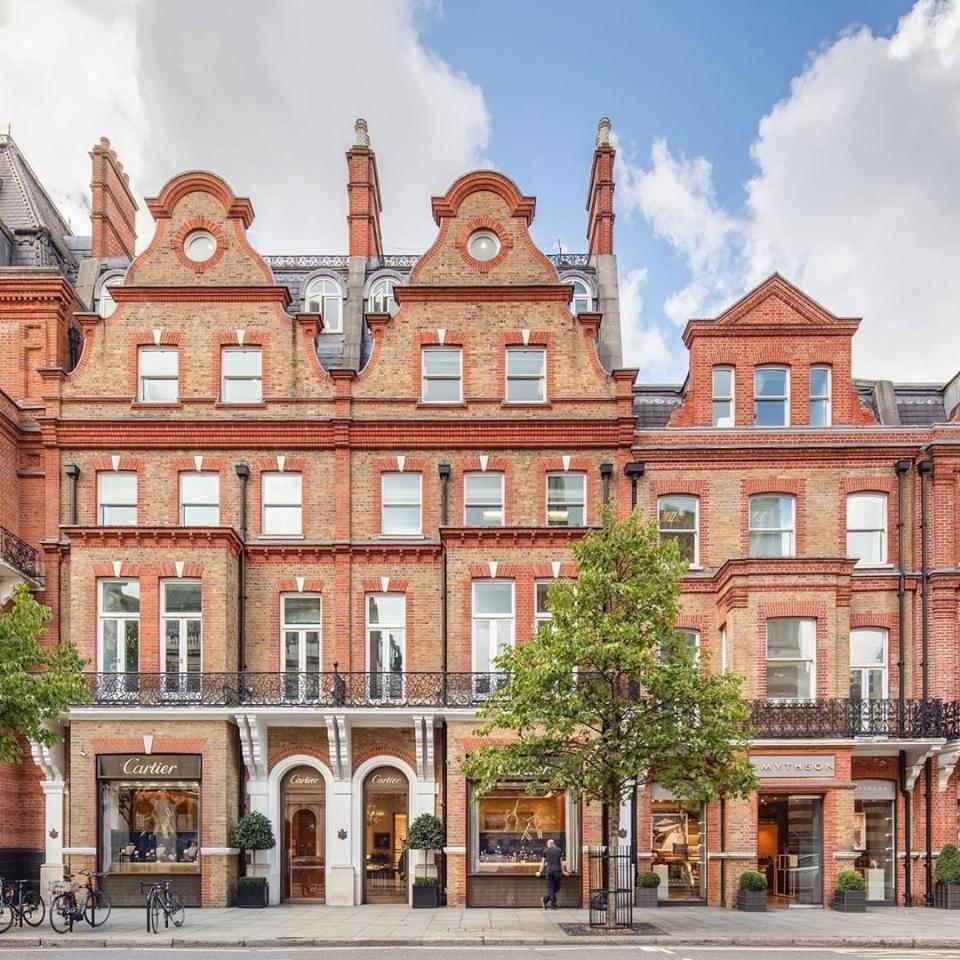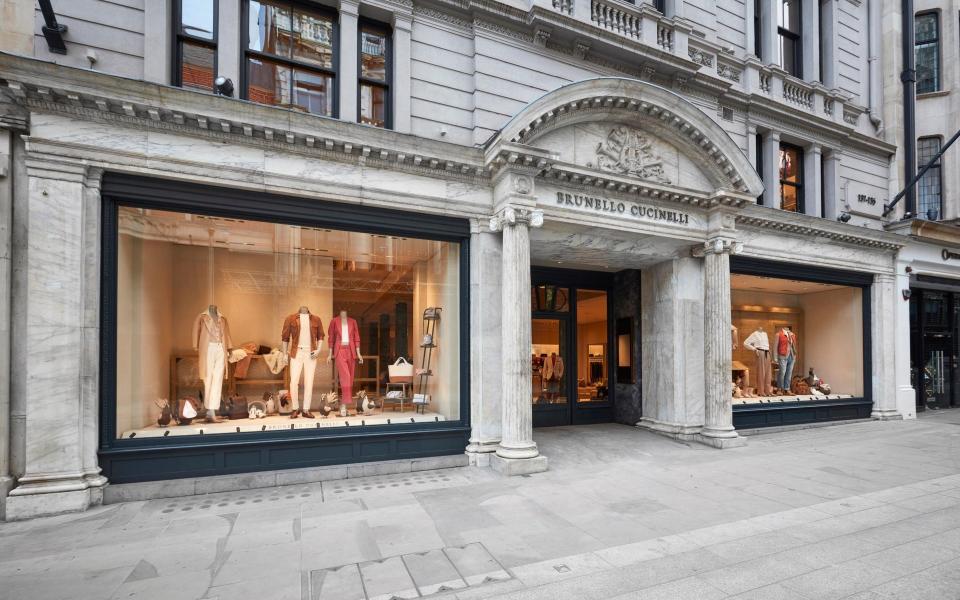What a trip down Bond Street looks like now: the new rules of luxury retail in the age of Covid-19

The luxury stores on Bond Street are booming. Every retailer reports hordes of shoppers passing through their doors. On a visit last Tuesday, I see four-figure scarves flying off the shelves in Hermes. Down the street in Dior, five women are perusing the handbags. In Louis Vuitton, couples arm-in-arm are partaking in his’n’ hers shoe splurges, the assistant passing heels and trainers to them at a safe distance while outside Dolce & Gabbana, a Russian mother and daughter clad in the brand’s Italianate finest take selfies before bustling inside. One greets the salesperson like an old friend, from 2 metre apart of course, with a definite sense that it’s good to be back.
Two men in Dior catch my eye. Decked out in logo-tastic Givenchy, laden with Givenchy bags, they’re jubilant about being able to admire Kim Jones’ crystal-dappled trainers in the flesh. “It’s just so nice to have up-close access to this again, and to be out and about in central London feeling normal,” one tells me.
Well, normal up to a point. The familiar Louis Vuitton motif of a four-point flower has been reinterpreted as a public safety message. It is now a handy sticker emblazoned across floors and walls, reminding customers to keep apart as they negotiate the new normal of luxury retail.
With all non-essential retail stores given the green light to re-open on Monday 15th June, and scenes of winding queues (and a distinct lack of social distancing) outside Primark, how would the rarefied high-end shopping experience compare? A stroll along London’s Bond Streets, both New and Old, gave some indication of the new landscape. And don’t expect the complimentary glass of champagne to materialise any time soon.
Luxury retail has always been about the joy of the experience. The chance to amble, window shop and leisurely browse in those glossy temples of consumerism is a form of calming self care, even if you have no intention to buy. That more relaxed approach is one casualty of Covid-19, because this is very much about destination shopping with a purpose rather than wandering to see what catches your eye.
Clothes now have to be quarantined for 72 hours after you try them on, so you have to be invested and interested in purchasing before you select items to try on. They will be out of action for others to buy afterwards - one store assistant in Liberty informs me that they go into partitioned sections separated according to day. This doesn’t, strangely, extend to touching the clothes, but stores vary on their stance on this.
What’s immediately apparent is that the digital-first approach that has governed our supermarket shopping in the past few months will parlay into our luxury shopping experience. In Prada, instead of physically handling a shirt, I’m encouraged to enlist an attentive salesperson in finding out details via iPad. She informs me of the size, fabric and price without having to handle the item.
In Liberty, after I ‘umm’ and ‘ahh’ over a Dries Van Noten shirt (a situation I’m no stranger to), the helpful shop assistant encourages me to take a photo of the bar code and size, and instead of having to schlep back and risk potential exposure again, to give the shop a ring to make the purchase - he may well be getting that call soon.

Elsewhere, the Cadogan Estate which owns Sloane Street has worked with brands to encourage shopping outside normal hours at Rag & Bone, or a call-and-collect service at Prada whereby you pull up by the kerb and an obliging salesperson puts your purchases directly in the boot of your car. Brands are also working to arrange chauffeured cars to ensure deposit prized clients at the store with no need to use public transport, although their High Net Worth spenders are unlikely to have been slumming it on the Central Line even before the lockdown.
"It's been wonderful to see so many local shoppers return to the area", says Hugh Seaborn, chief executive of Cadogan Estates. "What's clear is that consumers are shopping with a real intention to purpose. Average transactions are high, with people clearly knowing what they want before they arrive". Unlike other luxury destinations that rely on tourism, Sloane Street's foot fall is mainly residential, with three quarters of all shoppers local.
Trying on items is the biggest assault course in the new normal, and brands vary in their approach. In Prada, I inquire about trying the shirt on and am told I might have to come back later to make an appointment to do so, ensuring that the changing rooms are empty enough and have been disinfected. This is going to be a big sticking point for brands hoping to see sales revive after the slumps caused by the pandemic. Impulse buying is, at least for now, a thing of the past.
I do succeed in trying on a shirt in Dior and the process is seamless, with the booth ready and disinfected and a cleaner discreetly materialising after I leave. In Liberty, the process is less elegant. Changing rooms are closed and shoppers huddle in dark corners covertly trying on clothes while also attempting to maintain basic levels of decency. The sales operative in Hermès assures me that the brand’s exquisite scarves are quarantined after handling, but seeing other shoppers press them into their necks puts me off; a psychological hangover from our new germ-aware life, instead of any failing on the part of Hermès.
Brunello Cucinelli’s cloud-light cashmeres are just crying out to be caressed, and the salesperson prompts me to do so, assuring me that everything will be taken care of after I’ve gone. Tactility is essential to the USP of luxury fabrications, and there was no sense of that abating here. In Louis Vuitton, I enquire about how watches and jewellery can be tried on - the virus is proven to live longer on metals than on fabrics, for up to nine days according to some research.

I’m encouraged to browse the possible options on iPad instead of handling them physically. Is it fine to press the item against my wrist in trying it on, I ask? I’m told that that’s alright, but to try and do so without actually touching my skin.
Other parts of the shopping experience we’ve become accustomed to in supermarkets parlay into the luxury experience; the queuing we’ve come to expect, for example, with Louis Vuitton’s doorman recommending that I make an appointment online to ensure there’s no wait. Distancing measures are stringently enforced, with routes mapped out through stores - Vuitton’s service is peerless in guiding shoppers through while Liberty is something of a maze. The hand sanitisers everywhere are mandatory.
With high end hotels, restaurants and bars off limits for now, stores are the one luxury enclave granting access, and there were more than a few shoppers dressed up to the glorious nines just because they could. And that enjoyment of fashion and luxury is one thing that Covid-19 can’t take away.
Sign up for the Telegraph Luxury newsletter for your weekly dose of exquisite taste and expert opinion.

